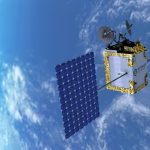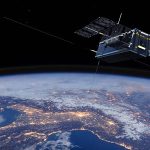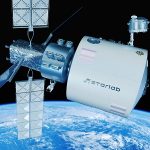Hotbird 13G satellite is designed to provide up to 1,000 television channels, including high-definition television broadcasts of 4K video, to over 160m households across MENA and Europe.

American space launch provider SpaceX has launched Eutelsat Hotbird 13G satellite into Geostationary Transfer Orbit using a Falcon 9 rocket that lifted off from Cape Canaveral, Florida, USA at 1.22 am Eastern time on November 3.
The separation of the all-electric satellite occurred after a 35-minute flight and the spacecraft systems initialisation was successfully completed over a period of 3 hours.
Eutelsat Hotbird 13G is the second of two satellites built by manufacturer Airbus Defence and Space to be placed at Eutelsats flagship 13-degree East neighbourhood position, replacing three older satellites. It is also based on the Eurostar Neo telecommunications satellite platform, developed under an ESA Partnership Project with Airbus designed to foster innovation and competitiveness in the European space industry. Once into orbit and positioned, the satellite Eutelsat Hotbird 13G will, with its twin Eutelsat Hotbird 13F launched on October 15, reinforce and enhance the broadcast of more than a thousand television channels into homes across Europe, Northern Africa and the Middle East. Moreover, the two satellites will offer advanced features in terms of uplink signal protection and resilience.
In February 2021, Eutelsat was entrusted once again by the European Union Agency for the Space Programme (EUSPA) to host the EGNOS GEO-4 payload, which is on board Eutelsat Hotbird 13G. Eutelsat already operates the EGNOS GEO-3 payload on its Eutelsat 5 West B satellite.
Eva Berneke, Eutelsat’s Chief Executive Officer said: “Eutelsat Hotbird 13G is now on its way to join Eutelsat Hotbird 13F at our flagship 13-degree East position. We also look forward to completing the GNSS network for our European Union long-term customer and partner, the EUSPA. My congratulations to the Eutelsat, Airbus and SpaceX teams for another successful launch into geostationary orbit.”















































































